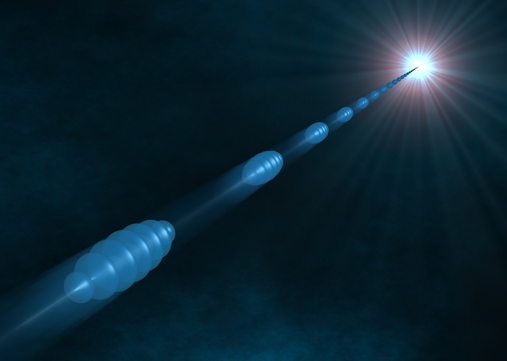FLASH2020+: millions for the modernisation towards ultrashort snapshots
Press & Communications
FLASH2020+: millions for the modernisation towards ultrashort snapshots
The FLASH2020+ project is entering a new phase: since 1 July, this major DESY project is being led by Enrico Allaria, who until recently had coordinated the development of the free-electron laser FERMI at the Elettra research centre in Trieste. "We are quite proud that we were able to attract such a distinguished expert for this," says Accelerator Director Wim Leemans about Allaria, who jumped straight into the virtual FLASH2020+ kick-off meeting on 3 July in his first week in Hamburg.
FLASH2020+ was initiated and coordinated by Wilfried Wurth until his sudden death in 2019. The Conceptual Design Report (CDR), which was published at the beginning of this year, is dedicated to his memory. The upgrade will now be made more concrete in the Technical Design Report. "It'll be a kind of living document," says Martin Beye, who has provisionally taken over the scientific leadership at FLASH. "While we file new chapters, other parts of the upgrade will already be under construction, and further ones in full operation."
To be more exact: if everything goes according to plan, two first-generation accelerator modules will be replaced with new, higher performance onces in about a year's time. The originals, which had functioned as prototypes for the European XFEL modules, will be completely overhauled for their new use. They will raise the cumulative energy of the accelerator to 1.35 gigaelectronvolts. Additionally, the optical lasers that generate the electron bunches will be replaced in the coming year.
Further project details: the second beamline at FLASH has already been enhanced by a large magnet chicane that enables even shorter light pulses at the facility. An "afterburner", a new type of undulator that will be installed behind the light-generating section, will generate circularly polarised laser light, with which material properties such as magnetism can be better examined. "For this purpose, we want to build an Apple-3 undulator, the design of which is based on the DESY in-house development from Markus Tischler's group," says Beye. These will also act simultaneously as a prototype for the seeding undulators that will be at the heart of the bigger upgrade in the FLASH1 tunnel.
Intensity and reproducibility of the X-ray laser light flashes will be increased by sending the electron bunches alongside an optical laser pulse through the undulator line. This laser beam excites the electrons into generating more intense and brighter laser light, whose wavelengths can be more precisely controlled than is possible in a classical SASE X-ray laser. "That will enable completely new experiments in many areas," says Beye.
And it gets even better: in order to increase the flexibility and availability of the facility, the entire undulator line from FLASH1 will be replaced with installable undulators of the latest design. "We want the users in both experiment halls to receive laser light independently of one another, while at the same time being able to individually adjust the wavelengths," says Siegfried Schreiber, leader of the FLASH accelerator. Further upgrades are being planned.
The high-performance optical lasers, which will have a frequency in the megahertz range, pose enormous challenges: "Alongside high performance, we want to cover all colours in the visible spectrum and beyond," says Ingmar Hartl, who leads the Laser Research and Technology group in the Photon Science area. On top of that, the flashes of the optical lasers and the X-ray laser will pulse after one another with a much more precise lag time. With that processes a time resolution of a few femtoseconds can be investigated.
It's a project that is as ambitious as it is promising! More than 35 million euro, the funds for which are mostly secured, will go to the FLASH upgrade in the next five years. It's reassuring, since there's some haste for the project team: when the construction of PETRA IV starts, most of the FLASH upgrade needs to be finished.
